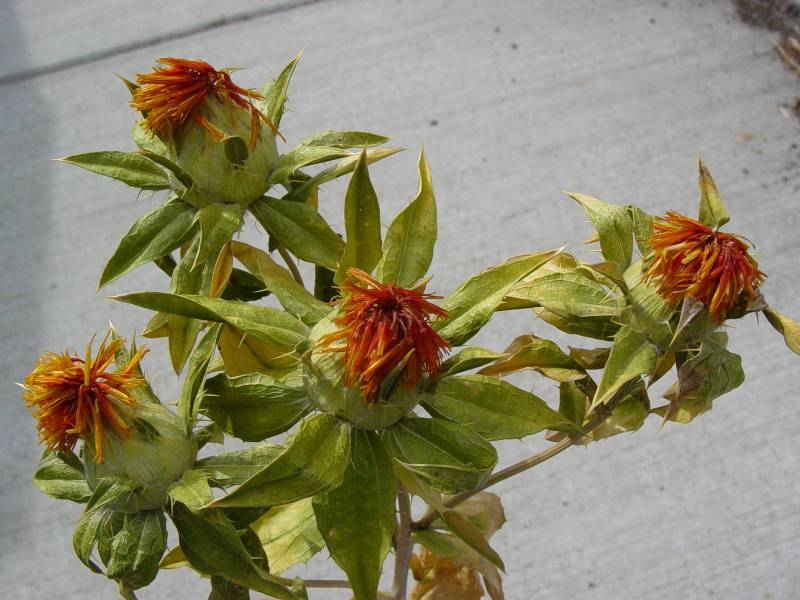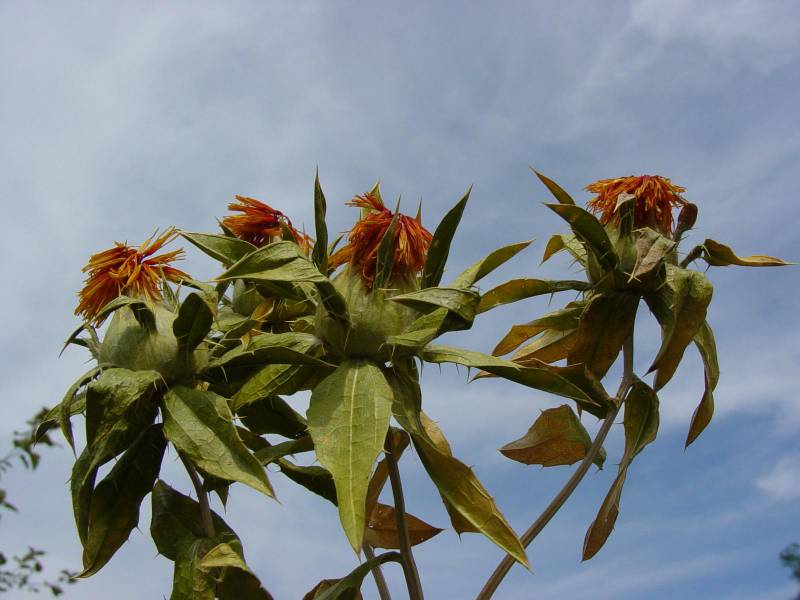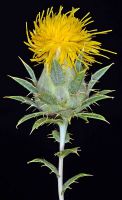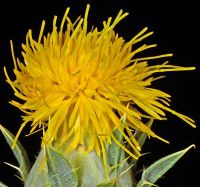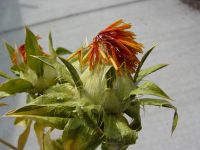Distribution: Escaped from cultivation in many western and mid-western states.
Habitat: Disturbed sites.
Flowers: May - August
Origin: Introduced from the Mediterranean region, usually a waif
Growth Duration: Annual
Conservation Status: Not of concern
Pollination: Bees, flies, beetles, wasps
Glabrous annuals 30-100 cm. tall, the stems straw-colored, erect, branched.
Leaves alternate, all cauline, dark green, the blades lanceolate to elliptic or ovate, 2-8.5 cm. long, veiny, shiny, the margins dentate with minutely spine-tipped teeth.
Involucres ovoid, 20-40 mm. in diameter; outer involucral bracts spreading to reflexed, 1.5-2 times longer than the inner, with terminal appendages minutely spine-toothed; corollas all tubular, yellow to orange-red, 20-30 mm. long, the throats abruptly expanded; anthers yellow to red; pappus of scales 1-4 mm. long or wanting.
Achenes white, 7-9 mm. long, slightly roughened.
Publication: Sp. Pl. 2: 830. 1753. 1753.
PNW Herbaria: Specimen records of Carthamus tinctorius in the Consortium of Pacific Northwest Herbaria database.
WA Flora Checklist: Carthamus tinctorius checklist entry.
OregonFlora: Carthamus tinctorius information.
E-Flora BC: Carthamus tinctorius atlas page.
CalPhotos: Carthamus tinctorius photos.
USDA Plants: Carthamus tinctorius information.

